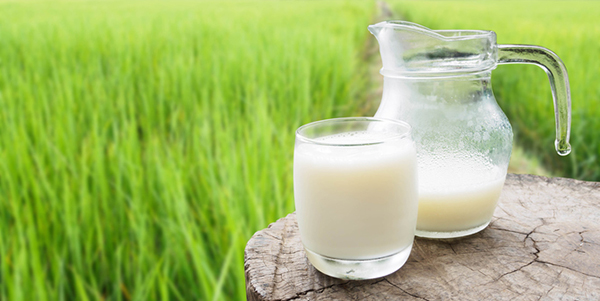Raw Milk Bacteria Shows Up in 19 States
Every kid in America has been told time and again to drink his or her milk. It’s served in many schools as the standard lunchtime beverage and many parents also use milk as their standard beverage for younger kids.
Milk is poured on our cereal (I had a bowl of cereal this morning with a generous amount of milk) and it’s put in coffee and tea and used in many recipes. It’s used to make French toast, pancakes, waffles, biscuits, rolls, cakes and some sauces. It’s also a key ingredient in many ice creams and puddings.
Go to your local grocery store and glance at the shopping carts you pass in the aisles. Especially take note of the carts of moms with younger kids and you often see 2 or more gallons of milk.
The diary industry in the United States is huge, producing billions of gallons of milk every year. It’s estimated that the average American consumes between 200 – 300 pounds of milk a year. A gallon of milk weighs about 8.6 pounds, meaning the average American drinks between 23.2 to 34.9 gallons of milk a year. Considering the fact that there are about 341 million people in the United States, that places the average annual consumption of the white beverage is between 7.9 to 11.9 billion gallons.
Milk is pushed as a major source of calcium, a chemical that everyone needs for healthy bones, teeth, hair and muscle function. However, did you know that when milk from the dairy is processed – homogenized – that the process alters the forms of calcium contained in the milk.
The human body cannot assimilate or utilize all forms of calcium and the forms left by homogenization. That means that your body gets far less calcium from the homogenized milk you buy in the store than most health sources report.
This leads many people to turn to raw milk, milk before it is homogenized.
The problem with turning to raw milk is the increased risk of being infected with bacteria that is passed through the milk by cows, especially cows that are not filled with antibiotics. Antibiotics fed to livestock is another reason why so many people try to turn to raw milk.
Raw milk comes with the risk of bacterial infections as being reported in a recent warning:
“The U.S. Centers for Disease Control and Prevention (CDC) has issued a food safety alert in 19 states over unpasteurized, or raw, milk from a Pennsylvania farm after a New York resident was infected with an antibiotic-resistant strain of Brucella bacteria, which causes the dangerous illness brucellosis.”
“The strain was found in a single cow, since removed from the milking herd, at the members-only food club Miller’s Biodiversity Farm in Quarryville, Penn., the CDC said Friday. One case had been confirmed in New York, “and an unknown number of people may have been exposed to RB51 from drinking the milk from this farm,” the CDC said in its advisory. ‘This type of Brucella is resistant to first-line drugs and can be difficult to diagnose because of limited testing options and the fact that early brucellosis symptoms are similar to those of more common illnesses like flu’.”
“The CDC urged anyone who had consumed raw milk or milk products from Miller’s since January 2016 to seek medical advice, as they may have been exposed. In addition the agency said consumers should discard all milk and milk products from this farm and seek medical advice whether or not they have symptoms.”
“‘People who are still within six months of the date they last consumed the raw milk are at an increased risk for brucellosis and should receive antibiotics to prevent an infection and symptoms, and should monitor their health for possible symptoms for six months,’ the CDC said. ‘If symptoms develop, they should see their doctor immediately for testing’.”
So, what is brucellosis? According to WebMD:
“Brucellosis is an infectious disease caused by a type of bacteria called Brucella. The bacteria can spread from animals to humans.”
“There are several different strains of Brucella bacteria. Some types are seen in cows. Others occur in dogs, pigs, sheep, goats, and camels…”
The symptoms of brucellosis are:
- Fevers that spike high in the afternoon
- Back pain
- Achiness throughout the body
- Loss of appetite and weight
- Headache
- Night sweats
- Weakness
- Abdominal pain
- Coughing
Yes, in some ways, raw milk is healthier, but it come with the risk of illness. This is why many states have passed laws forbidding the sale of raw milk, because it can be a health hazard. I won’t recommend drinking raw milk for that very reason. If you are concerned about the antibiotics in processed milk or disease in raw milk, perhaps you need to find better sources of calcium and the other nutrients found in milk.









Recent Comments